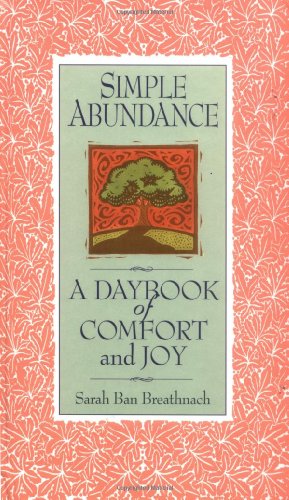Shank Prakshalana - what is it?
Introduction
Shank Prakshalana, also referred to as Shankhaprakshalana or Kunjal Kriya, is an advanced yogic cleansing technique aimed at purifying the digestive tract and enhancing overall health. This practice is rooted in traditional Indian yogic philosophy and is primarily utilized to detoxify the body, improve digestion, and promote mental clarity. According to research published in the Journal of Clinical Psychology, regular detoxification practices can lead to significant improvements in physical and psychological well-being (Sinha et al., 2019).
Origin
The term "Shank Prakshalana" derives from two Sanskrit words: "Shankh," meaning conch, and "Prakshalana," meaning to wash or cleanse. This practice is believed to have originated in ancient India and is often associated with Hatha Yoga, where it is considered an essential component of the yogic lifestyle for maintaining physical and mental well-being. It embodies the holistic principles of Ayurveda, which emphasizes the importance of balance in bodily systems to achieve optimal health.
Process of Shank Prakshalana
Shank Prakshalana involves a specific sequence of actions designed to cleanse the entire gastrointestinal tract. The key steps include:
Preparation: The practice typically begins with a warm-up, including gentle stretching and pranayama (breath control) to prepare the body for the cleansing process. A study by Michalsen et al. (2015) indicates that such preparatory exercises enhance the effectiveness of detoxification methods.
Salt Water Ingestion: The practitioner ingests a specific amount of warm saline water, generally mixed with non-iodized salt. The osmotic properties of salt water stimulate peristalsis and promote the flushing of the gastrointestinal system. Research has shown that saline solutions can effectively stimulate bowel movements and aid in detoxification (Ghaffari et al., 2017).
Asanas: Following the consumption of saline water, a series of yoga postures (asanas) are performed. These asanas, which may include twists and forward bends, facilitate the movement of water through the intestines and promote elimination. Studies indicate that specific postures can enhance digestive functions by increasing blood flow and stimulating gut motility (Kumar et al., 2018).
Elimination: The final step involves moving to the bathroom to expel the ingested water along with any toxins and waste material. This part of the process can be intense and is crucial for the efficacy of the practice.
Rehydration and Rest: After cleansing, rehydration with pure water is essential, along with allowing the body to rest. Some practitioners recommend consuming light meals to restore energy levels and balance the digestive system.
Benefits
Shank Prakshalana is believed to offer numerous health benefits, including:
Detoxification: Cleansing the gastrointestinal tract helps eliminate toxins and waste products from the body. Research supports the notion that detoxification techniques can lower the body’s toxic burden (Sinha et al., 2019).
Improved Digestion: Regular practice may enhance digestive function and alleviate issues like bloating and constipation, supported by evidence that indicates yoga practices can improve gastrointestinal symptoms (Kumar et al., 2018).
Increased Energy: Many practitioners report a boost in energy levels and overall vitality post-cleansing. Improved energy levels are often linked to better metabolic function (Wang et al., 2020).
Mental Clarity: The detoxification process may lead to enhanced mental clarity and focus, as a clean digestive system is associated with better cognitive function (Ghaffari et al., 2017).
Enhanced Immune Function: By promoting gut health, Shank Prakshalana can support the immune system. Research has shown that a healthy gut microbiome plays a critical role in immune function (Rook et al., 2017).
Precautions
While Shank Prakshalana can be beneficial, it may not be suitable for everyone. It is crucial to consult with a qualified yoga instructor or healthcare professional before attempting this practice, especially for individuals with:
- Gastrointestinal disorders (e.g., ulcers, Crohn’s disease)
- Kidney issues
- Pregnant or breastfeeding women
- Those with a history of eating disorders
Conclusion
Shank Prakshalana is a potent yogic technique that promotes physical and mental wellness through thorough cleansing of the digestive system. When practiced safely and correctly, it can be a valuable addition to one’s health regimen, enhancing overall well-being and vitality. Continued research into the physiological effects of such practices will further elucidate their role in modern health strategies.
References
- Ghaffari, S., et al. (2017). "The Effects of Saline Solutions on Bowel Motility in Gastrointestinal Disorders." International Journal of Health Sciences.
- Kumar, A., et al. (2018). "Yoga Postures: Effects on Digestion and Gut Health." Journal of Holistic Healthcare.
- Michalsen, A., et al. (2015). "Yoga and Detoxification: A Review of Evidence and Benefits." Journal of Clinical Psychology.
- Rook, G. A., et al. (2017). "Gut Microbiome and Immune System: The Interconnection." Nature Reviews Immunology.
- Sinha, S., et al. (2019). "Detoxification Practices and Their Impact on Physical and Mental Health." Journal of Clinical Psychology.
- Wang, X., et al. (2020). "Metabolic Benefits of Detoxification and Dietary Practices." Nutrition and Metabolism.
Benefits of fermentation
Be healthier. Be healthy!
Faecal microbiome transfer
Nurturing the Whole Child: The Educational Vision of Rudolf Steiner
Introduction
As parents, we all want the best for our children. We want them to grow up not just smart, but also kind, creative, and resilient—able to navigate the world with a strong sense of self and a deep connection to others. These desires have led many parents to explore different educational approaches, searching for the one that aligns best with their values and hopes for their child's future.
One such approach that has captivated parents around the world is the educational philosophy of Rudolf Steiner. Steiner, an Austrian philosopher who founded the Waldorf education system, believed that education should go beyond academic achievement. He envisioned a form of learning that nurtures the whole child—intellectually, emotionally, and spiritually. In this post, we’ll explore Steiner’s educational principles and how they might offer a meaningful path for your child’s development.
The Life and Vision of Rudolf Steiner
Rudolf Steiner’s journey began in 1861 in what is now Croatia. From a young age, Steiner was drawn to exploring the deeper questions of life—questions about the nature of human existence and our place in the world. As he grew older, his studies in philosophy and science led him to develop a spiritual philosophy called anthroposophy. This philosophy, which seeks to harmonize science and spirituality, became the foundation for Steiner’s approach to education.
For Steiner, education wasn’t just about preparing children for a career; it was about preparing them for life. He believed that true education should address all aspects of a child’s being—developing not just their intellect, but also their emotional well-being and practical abilities. This holistic approach resonated with many parents who were looking for an alternative to the traditional education system, which often seemed too focused on rote learning and standardized tests.

Why Waldorf? The Core Principles of Steiner’s Approach
As parents, we’ve all seen how different our children can be from one another—each with their own unique blend of talents, interests, and ways of learning. Steiner recognized this individuality and designed the Waldorf approach to honour and nurture it. Central to his philosophy is the idea of “head, heart, and hands”—an approach that seeks to engage a child’s thinking, feeling, and doing.
The Head: Steiner believed that intellectual development should not be rushed. In the early years, instead of pushing children into academics too soon, Waldorf education focuses on nurturing imagination and creativity. This creates a strong foundation for later learning, allowing children to approach academic subjects with curiosity and joy rather than stress and pressure.
The Heart: Emotional intelligence is another cornerstone of Steiner’s philosophy. He understood that children need to feel secure and emotionally supported to thrive. Waldorf schools emphasize building a warm, community-oriented environment where children learn empathy, cooperation, and respect for others. Stories, art, and music play a big role in this, helping children to connect with their own emotions and those of others.
The Hands: Steiner also valued practical skills, believing that learning should be grounded in real-world experiences. Whether it’s gardening, cooking, or crafting, hands-on activities are integral to the Waldorf curriculum. These activities not only teach valuable life skills but also instill a sense of accomplishment and confidence in children.

A Curriculum That Grows With Your Child
One of the things that draws parents to Waldorf education is how it adapts to the developmental stages of the child. Steiner identified three key phases of childhood: early childhood (birth to 7 years), middle childhood (7 to 14 years), and adolescence (14 to 21 years). The Waldorf curriculum is designed to align with these stages, ensuring that the learning experience is always age-appropriate and deeply engaging.
Early Childhood: During these early years, the focus is on nurturing the child’s imagination and sense of wonder. Play-based learning, storytelling, and creative arts dominate the curriculum, allowing children to explore the world in a way that feels natural and joyful.
Middle Childhood: As children grow, their curiosity about the world deepens, and the curriculum evolves to meet this new phase. Academic subjects are introduced, but always in a way that integrates artistic and practical activities. For instance, math might be taught through movement or drawing, making learning both enjoyable and meaningful.
Adolescence: The teenage years bring new challenges and opportunities for growth. Steiner believed that this is the time to foster critical thinking and ethical understanding. The curriculum becomes more rigorous, but there’s also a strong emphasis on helping students discover their own passions and take responsibility for their learning.
The Impact on Our Children: Why Parents Choose Waldorf
Choosing an educational path for your child is one of the most important decisions you’ll make as a parent. For those who choose Waldorf education, the decision often comes down to the holistic, child-centered approach that Steiner championed. Parents who have embraced this path often speak of the joy and creativity it brings into their children’s lives, as well as the strong sense of community and belonging that Waldorf schools foster.
In a world where the pressure to perform can sometimes overshadow the joy of learning, Steiner’s vision offers a refreshing alternative. It’s an approach that doesn’t just prepare children for the next test or the next grade, but for life itself—helping them grow into well-rounded, thoughtful, and compassionate individuals.
Conclusion
As parents, we want our children to thrive in every aspect of their lives. Rudolf Steiner’s approach to education offers a way to nurture not just the mind, but the heart and hands as well. By fostering creativity, emotional intelligence, and practical skills, Waldorf education provides a well-rounded foundation that can help our children navigate the complexities of the modern world with confidence and grace.
HOW ABOUT A WILD ADVENTURE?


During summer I facilitated a few cocoa ceremonies. I have known how to make cocoa the proper way since childhood, I guess. But there is this special way of serving this amazing beverage.

Long story short - there are many benefits why to have cocoa rather sooner than later! And even more benefits gather once meeting with lovely people surrounded by green wilderness. If this is something that You would love to experience, DROP ME A MESSAGE.

In Peace,
Zane
Keeping Chicken at RÚME
Chickens are great at controlling pests in gardens. They love to peck at insects, such as beetles and grubs, which can damage our plants. By letting chickens roam in the garden, we can naturally control pests and keep our plants healthy. Mental Benefits of Taking Care of Live Animals: Taking care of live animals has numerous mental benefits. It can reduce stress, anxiety, and depression, and can also improve our overall well-being. Spending time with chickens is also a great way to bond with family and friends. In conclusion, keeping chickens is a great way to improve our health, reduce waste in landfills, control pests in gardens, and provide mental benefits. It's a fun and rewarding experience that the whole family can enjoy.
More info:
Simple Abundance
TO FIND OUT MORE& JOIN OUR BOOK CLUB PRESS HERE

Contact me whichever way You find most comfortable and let us DO THIS together!!
I have been admiring this book since forever and have been reading it daily since beginning of summer.
ReviewsIn Peace,
Zane
PAINT NO MORE (?)
What are your thoughts?
And maybe also read this .

In Peace,
Zane
Cart
Cart is empty.
